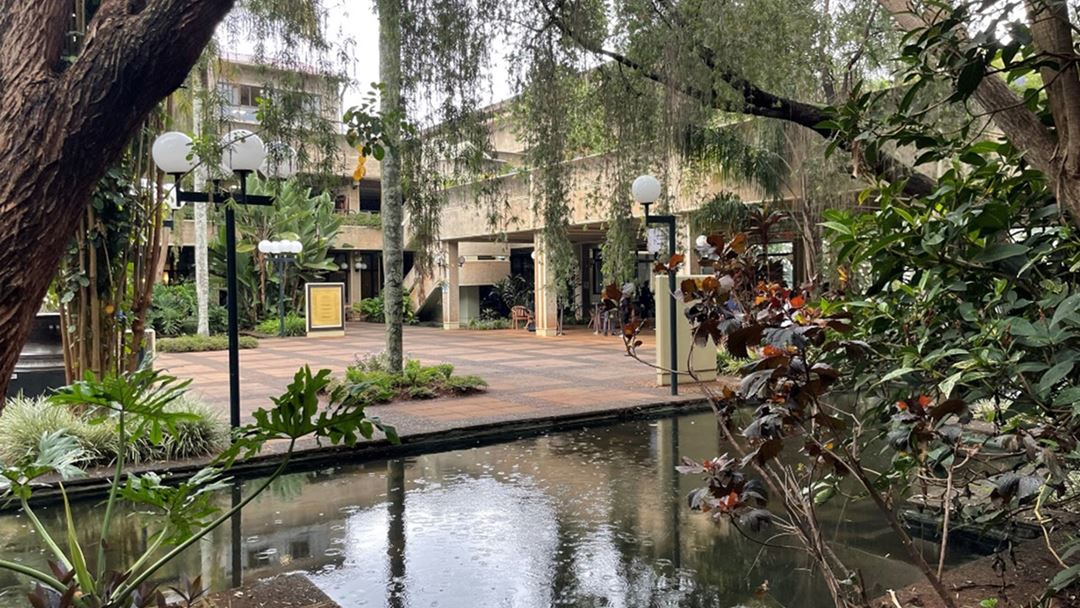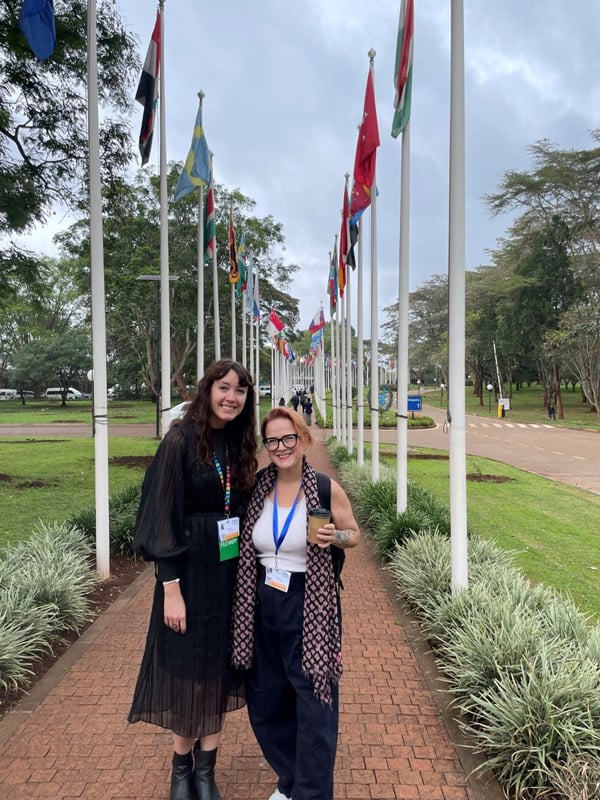Day 3 recap INC-3 - “The one where we spent 13 hours at the UN building in Nairobi, Kenya”
We have now observed three full days of negotiations towards a treaty to stop plastic pollution, including in the marine environment.

By Rachel Tiller and Emily Cowan, SINTEF Ocean
We have now observed three full days of negotiations towards a treaty to stop plastic pollution, including in the marine environment. And the delegates in Nairobi have moved on to substantial issues now – and are working on the zero draft prepared by the Chair Gustavo Meza-Cuadra Velasquez from Peru with the support of the secretariat prior to these negotiations. Well aware of the daunting task ahead of them in terms of making it through two full readings of the draft treaty text during this week, the co-facilitators of the Contact Groups often asked delegates to “please be succinct”. For clarification, this means communicating and expressing views in a compact and precise manner without wasted words, in this context when presenting their interventions on different parts of the text, very few were able or willing to do so – with notable exceptions.
Recalling that the treaty text under consideration consists of six different parts (see our blog post on the start of INC3 on the 13th of November 2023) - 1 – Background context; 2 – Life cycle of plastics; 3) Finance and Capacity building; 4) Implementation and monitoring; and 5) Institutional arrangements. The substantial work is divided into these as well – with Contact Group 1 (CG1) handling part II, and Contact Group 2 (CG2) handling parts III and IV. Contact count 3 (CG3) was to discuss Part I on the preamble, definitions, principles and scope. These discussions started already on day 2 of the negotiations (see our blog post on day 2 here)
CG1 – After completing substantial talks on the first section on Part II on Primary Plastic Polymers (PPP) last night, with clear lines drawn in the sand between groups of delegates, today, talks moved on to section 2 on chemicals and polymers of concern. Given the strict time line and need to complete Part II by lunch on day 4, the co-facilitators may have had hopes of finishing at least through the first 8 of the 13 sections in this part by the scheduled 22:00 time. By 22:30 however, delegates had only completed the first six, and when it was suggested that we power through with two more sections, one of the delegates suggested that sleep would also be nice. This was seconded by many of the colleagues in the room, and delegates and observers left the building to rest and be ready for marathon runs of this first reading of the Zero Draft before – and through – lunch on Thursday.

Emily Cowan and Rachel Tiller at the UN headquarters in Nairobi, Kenya on the 3rd day of negotiations for INC-3
CG2 – this group fared better in being succinct when discussing the substantial issues in Part III and Part IV today. With two parts to complete, and two three-hour sessions to do it in, the facilitators and delegates alike managed to keep their interventions short, compact and precise and ended by 18:30 with having completed the entire first reading of the draft text. These sections were on issues that were arguably less contentious than that of part II on the life cycle of plastics itself. Some issues were also not discussed because they depended on outcomes from CG1. Delegates are now preparing changes, additions and deletions to be added to this text so that a new version of the draft treaty text can be ready for a second reading to be completed by the end of Sunday the 19th of November.
CG3 - In this second session of CG3 on day 3 of negotiations, the final members states were able to give their opinions on the preamble of the future treaty, definitions, scope and principles. After hearing from 4 NGOs, the member states convinced the facilitators of the session to start discussing the institutional arrangements instead, in part V, so that will no longer be left blank in the draft treaty text. Nearly all who spoke agreed that the governing body of the future treaty should be in the form of a Conference of Parties known as a COP. This work will continue on Day 4 – Thursday!
The expectations for Day four is that after the morning session, when CG1 and 3 are meeting again, all contact groups will have had a first reading of their respective sections of Zero Draft, and that the Secretariat will be able to include all comments, additions, brackets, and changes from member states in a new draft treaty text for a second reading. The afternoon session on Thursday is a plenary session, where the co-facilitators will give detailed readings of recaps from the sessions they have had with delegates and delegates will give comments on these. We also know there is an official event scheduled – a Swiss Break organized by Switzerland – and that could mean – fingers crossed – that we have a space for breathing before the Contact Groups meet again to look at the new version of work on Friday.
13 hours days are rough though. But did I mention we are in Kenya?
